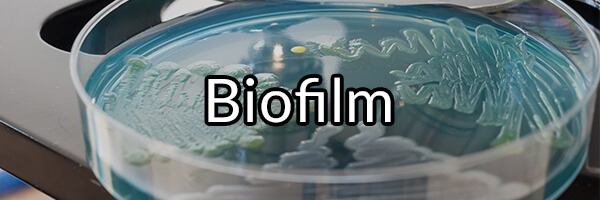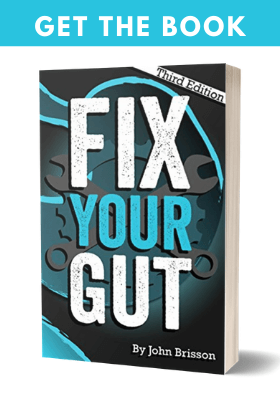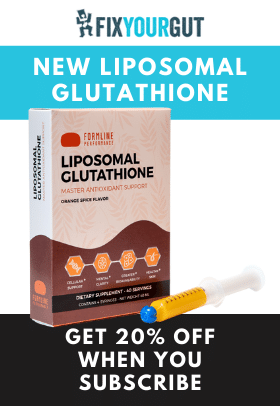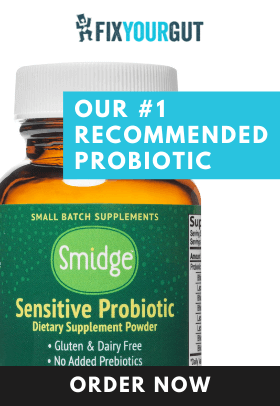Biofilm is any group of microorganisms that stick together in a large colony on a surface. Bacteria, for example, adhere themselves to a surface, and other bacteria using tiny hair-like appendages called pili. They also form polysaccharide matrices to enclose the bacterial colonies to protect themselves further. Finally, bacteria can either multiply or disperse within a biofilm colony to further infect the host while they are safely protected!1 2
Opportunistic bacteria form protective biofilms (one of the most common examples of a biofilm is the “film” on your teeth that appears when you do not brush for a while) which can make eradication with antibiotics or by your immune system very difficult. Some bacteria are more prone to form biofilms in the human body including bacteria from the genus Borrelia, Clostridioides difficile, Streptococcus mutans, Legionella, Streptococcus pneumoniae, and Streptococcus aureus.3 4
There are many conditions that are associated with biofilms and they include:5
- Urinary tract infections
- Catheter and prosthesis infections
- Central line and intravenous infections
- Tube infections (for example a tracheostomy tube)Ear infections
- Sinus infections
- SIBO(small intestinal bacterial overgrowth syndrome)
- Upper gut dysbiosis
- Endocarditis
- Dental caries and oral infections (you brush your teeth to physically break apart biofilm and remove food particles from teeth and gums)
- Toxic shock syndrome
- Skin infections
- Septicemia
Biofilms also form on medical equipment that are used in treatment including ventilator tubes, artificial heart valves, joint prosthesis, catheters, IV (intravenous) ports, and even contact lenses which cause infections.6
Even food products that we eat contain bacteria and thus biofilm. These biofilm producing bacteria make it easier to develop foodborne illness from improperly prepared food!7
Here is an explanation about the seriousness of biofilm and the rise of foodborne illnesses from Hans Blascheck, a microbiologist from the University of Illinois:8
“If you could see a piece of celery that’s been magnified 10,000 times, you’d know what the scientists fighting foodborne pathogens are up against,” says Blaschek.
“It’s like looking at a moonscape, full of craters and crevices. And many of the pathogens that cause foodborne illness, such as Shigella, E. coli, and Listeria, make sticky, sugary biofilms that get down in these crevices, stick like glue, and hang on like crazy.”
According to Blaschek, the problem faced by produce suppliers can be a triple whammy. “If you’re unlucky enough to be dealing with a pathogen–and the pathogen has the additional attribute of being able to form biofilm, and you are dealing with a food product that’s minimally processed, well, you’re triply unlucky,” the scientist said. “You may be able to scrub the organism off the surface, but the cells in these biofilms are very good at aligning themselves in the subsurface areas of produce.”
Make sure you wash and scrub your produce very well before consumption! I do disagree with him on scrubbing. However, scrubbing will break up biofilm and break loose enough excessive bacteria in most cases to prevent you from getting ill. I would also recommend using an organic veggie/fruit cleaner, the acids will help eat through the biofilms and reduce the microbe colony forming units.
Biofilm protects organisms from antibiotic treatment, bactericides, anti-microbial supplements, your immune system, and probiotics. Sometimes to reduce dysbiosis you also have to disrupt the biofilm that protects the organisms and break up the colonies! Elimination of biofilm can be accomplished through using either conventional medicines or anti-biofilm supplements. Though biofilm can be a problem when you are dealing with dysbiosis, it does serve a purpose in a healthy microbiome as well. For example, the biofilm itself is not dangerous, but whom is producing and to what extent matters. Your immune system helps maintain biofilms and determines if the bacteria are residing underneath are probiotic or pathogen. If the bacteria is determined to be a pathogen our immune system and microbiome hopefully keeps it from becoming dysbiotic. Biofilm concentrations seem to be their highest inside of the appendix compared to the rest of the distal bowel in our digestive system. Biofilms are always shedding in our intestinal system, and our immune system reacts to it either positively or negatively depending on the strain that produced the film. The shedding of probiotic biofilm, for example, may help protect probiotic bacteria from our immune system further down the colon.9 10 11
So what are some supplements that can be used to break up biofilm formation or reduce its production if possible when needed?
Supplements That Can Help Destroy Biofilm
Biofilm is held together by an exopolysaccharide matrix. The protective exopolysaccharide matrix encases the bacteria and has water channels that act as a transport medium to exchange biochemical signals and nutrients between enclosed bacteria. The matrix also protects the bacteria from oxidative damage caused by antimicrobial agents and increases their resistance.12 13
There are many different supplements that can damage this exopolysaccharide matrix and allow antimicrobial agents to eliminate the bacteria.
Iron and Biofilm Formation
Iron within your body is currently either being used by your cells or is bonded by iron transporting proteins to be transported or eliminated. Iron that is within our body or what the iron we ingest can become sequestered by our microbiome for survival and depending on the organism used to produce biofilm. The body will attempt to limit the amount of free iron available and bonded iron in circulation by incorporating as much as it can into cells during an infection which can trigger further inflammation. We can disrupt biofilm by either getting cells to incorporate iron more efficiently when needed, sequestering ingested iron, or by binding and eliminating what little free iron is available in the body.14 15
Supplements That Hinder Bacteria’s Access to Iron or Physically Break Apart Biofilm
EDTA
Ethylenediaminetetraacetic acid is often used in the medical industry for chelation therapy. EDTA bonds with iron and removes it from the body before bacteria can use it to form biofilm. For caution, take supplements containing minerals four hours before or four hours after taking an EDTA containing supplement. It is possible for EDTA to bind with calcium and magnesium. Do not use EDTA if you are dealing with mercury toxicity.16
Lactoferrin
Lactoferrin is a multifunctional transferrin protein that is one of the many components of an animal’s innate immune system. Lactoferrin exhibits strong antimicrobial activity and can easily be extracted from most mammals milk (supplemental lactoferrin is usually produced by from cows, goats, or sheep).17 Lactoferrin has strong antibacterial properties; it can destroy both opportunistic bacteria itself and disrupt biofilm.
Lactoferrin scavenges free iron in the body, forces cells to incorporate iron at a greater rate,18 19 and binds to lipopolysaccharides in the bacterial cell walls.20 These reactions cause bacteria to not be able to use properly for respiration. Access to iron is necessary for bacteria growth and function. When lactoferrin binds to lipopolysaccharides in bacterial cell walls, the oxidized bonded iron scavenged by the lactoferrin creates excessive oxidative damage. Lactoferrin also damages the bacterial cell membranes causing them to lose permeability. Finally, lactoferrin stimulates the immune system by increasing the phagocytic ability of white blood cells.21
Colloidal Silver
Colloidal silver (particles of silver that are suspended in a medium) is a potent anti-microbial/anti-biofilm agent. Like lactoferrin and EDTA, silver chelates iron from organisms and biofilm. Restriction of iron by colloidal silver reduces bacteria’s capability to produce biofilm, creates excessive oxidative stress, and ultimately eliminates bacteria. Silver also punctures tiny holes into the EPS, damaging the integrity of the EPS, which makes it easier for antimicrobials and immune cells to eliminate the bacteria. A recent study shows that the combined use of colloidal silver with antibiotics can make previously resistant bacteria become susceptible to commonly prescribed antibiotics again. The proposed mechanism of action is oxidative damage done to the EPS due to the colloidal silver allowing the bacteria to become sensitive to antibiotics again.22 23
Colloidal silver should only be used as a last resort to reduce biofilm because it has to come in contact directly with the film itself and it is very broad spectrum. Therefore, silver does not discriminate between opportunistic and probiotic bacteria. Colloidal silver supplements work very on biofilms found in skin infections, direct contact when rubbed on the skin, and seem to help in people with severe upper gut dysbiosis. Silver that is ingested may not work very well, if at all, to break up systemic biofilm because it is poorly absorbed into the bloodstream. I would not recommend using colloidal silver nose sprays because metals (including zinc) have been found to damage the olfactory epithelium. Finally, colloidal silver should only be used for a short period of time (days or weeks) because of the substantial broad-spectrum effect (yet sometimes needed) it has on the microbiome.
Recommended Brands:
Supplements That Degrade Biofilm
Systemic Enzymes
One of the most effective ways to eliminate biofilm is to dissolve the EPS matrix by using enzymes. The EPS matrix consists of proteins, nucleotides, and saccharides.24 Enzymes can break those components down, therefore reducing them which weakens the matrix. Enzymes dissolve both bacterial and yeast biofilms. Protease can be used to break down the proteins that composed the EPS matrix. Saccharides can be broken down by using glucoamylase, pectinase, cellulase, beta-glucanase, and chitosanase. Lysozyme reduces peptidoglycans (a polymer composed of sugars and amino acids) that make up a big part of the EPS. Be careful when taking enzyme supplements if you are dealing with gastritis, they may irritate the stomach lining.25 26 27
Recommended Brands:
- Interphase Plus (do not use if you are burdened with heavy metals like mercury because it contains EDTA which can lead to improper chelation)
- PRX Enzyme Formula
- Neprinol AMD
N-acetylcysteine
NAC reduces biofilm formation and adhesion which helps to eliminate bacteria from the body. NAC is not able to actively degrade exopolysaccharides like enzymes and colloidal silver, but NAC appears to be able to disrupt exopolysaccharide production, therefore, weakening the EPS matrix. NAC has been used medically to break down bacterial biofilms in cystic fibrosis patients both orally and inhaled. NAC seems to inhibit both EPS formation capabilities of yeast and bacteria. NAC supplementation also appears to work on systemic biofilm formation. Use NAC with caution if you are mercury burderened or have mercury amalgams.28 29
Recommended Brand:
- Jarrow Formulas NAC Sustain
- Pneumonia
- Septic shock
- UTI (urinary tract infection)
- Upper gut and intestinal overgrowth
- Necrotising enterocolitis
- Skin infections
- Inhibits S. aureus growth and biofilm formation.44 45
- Reduces and breaks down biofilm formation of Escherichia coli, Klebsiella pneumoniae, Proteus mirabilis, Streptococcus pyogenes, and Bacillus subtilis.46
- Reduces Candida albicans growth.46
- Might be useful in reducing S. mutans growth and improving oral health when brushed or swished in the mouth.48
- All studies done with cis-2-decenoic acid are in-vitro. We do not know if the same benefits can occur if you ingest the fatty acid, but it may correlate to topical use and biofilm reduction.
- It may be possible that the ingestion or use of cis-2-decenoic acid may increase Pseudomonas aeruginosa survival or lead to an overgrowth. If you have a known overgrowth of the bacteria, I recommend not to use it.
- Black, Jacquelyn. Microbiology: Principles and Explorations, Wiley, May 1, 2012. ↩
- Bauman, Robert. Microbiology with Diseases by Body System, Benjamin Cummins, September 12, 2012. ↩
- Black, Jacquelyn. Microbiology: Principles and Explorations, Wiley, May 1, 2012. ↩
- Bauman, Robert. Microbiology with Diseases by Body System, Benjamin Cummins, September 12, 2012. ↩
- Bauman, Robert. Microbiology with Diseases by Body System, Benjamin Cummins, September 12, 2012. ↩
- Bauman, Robert. Microbiology with Diseases by Body System, Benjamin Cummins, September 12, 2012. ↩
- http://bacteriality.com/2008/05/26/biofilm/ ↩
- http://news.aces.illinois.edu/news/banishing-biofilms-loosening-their-grip-could-make-food-supply-safer ↩
- https://onlinelibrary.wiley.com/doi/abs/10.1111/j.1420-9101.2009.01809.x ↩
- https://www.sciencedirect.com/science/article/pii/S002251930700416X ↩
- https://onlinelibrary.wiley.com/doi/abs/10.1002/ar.21357 ↩
- http://mic.sgmjournals.org/content/147/1/3.full ↩
- http://www.intechopen.com/books/the-complex-world-of-polysaccharides/exopolysaccharides-of-the-biofilm-matrix-a-complex-biophysical-world ↩
- http://www.plosone.org/article/info%3Adoi%2F10.1371%2Fjournal.pone.0034388 ↩
- http://onlinelibrary.wiley.com/doi/10.1111/2049-632X.12132/abstract ↩
- http://umm.edu/health/medical/altmed/supplement/ethylenediaminetetraacetic-acid ↩
- http://www.ncbi.nlm.nih.gov/pubmed/14568385 ↩
- http://www.ncbi.nlm.nih.gov/pubmed/15222467 ↩
- http://www.ncbi.nlm.nih.gov/pubmed/16469988 ↩
- http://www.ncbi.nlm.nih.gov/pubmed/15251114 ↩
- http://www.ncbi.nlm.nih.gov/pubmed/3886800 ↩
- http://thesilveredge.com/study-silver-enhances-antibiotic-activity-against-gram-negative-bacteria.shtml#.VJGkK_9k4 ↩
- http://thesilveredge.com/studies.shtml#.VJGVOXtPmPU ↩
- http://www.intechopen.com/books/the-complex-world-of-polysaccharides/exopolysaccharides-of-the-biofilm-matrix-a-complex-biophysical-world ↩
- http://www.google.com/url?sa=t&rct=j&q=&esrc=s&source=web&cd=3&ved=0CCwQFjAC&url=http%3A%2F%2Fpeople.ufpr.br%2F~microgeral%2FRegulacaopeptideoglicana.pdf&ei=uqSRVMDqJYH9gwTW1IL4Bg&usg=AFQjCNHxnU2siz2QIMUv0i6T7XMXFtWI1w&sig2=pt1TsMEMAFGyue8A58W5lA&bvm=bv.82001339,d.eXY ↩
- http://www.nleducation.co.uk/resources/reviews/dissolve-biofilms-with-fibrinolytic-enzymes-autism-support/ ↩
- http://www.ncbi.nlm.nih.gov/pubmed/25189866 ↩
- http://aem.asm.org/content/69/8/4814.full ↩
- http://pubs.sciepub.com/ajidm/2/5/5/ ↩
- http://www.tahomaclinicblog.com/d-mannose-for-bladder-and-kidney-infections/ ↩
- http://www.tahomaclinicblog.com/d-mannose-for-bladder-and-kidney-infections/ ↩
- http://www.ncbi.nlm.nih.gov/pmc/articles/PMC350928/ ↩
- http://www.ncbi.nlm.nih.gov/pubmed/6346629 ↩
- http://www.ncbi.nlm.nih.gov/pubmed/19178100 ↩
- http://www.ncbi.nlm.nih.gov/pubmed/19777305 ↩
- http://www.ncbi.nlm.nih.gov/pubmed/19178100 ↩
- http://www.ncbi.nlm.nih.gov/pubmed/19777305 ↩
- http://www.nature.com/ijos/journal/v6/n4/full/ijos201438a.html ↩
- http://www.ncbi.nlm.nih.gov/pubmed/21457463 ↩
- http://chriskresser.com/are-xylitol-sorbitol-and-other-sugar-alcohols-safe-replacements-for-sugar/ ↩
- http://journals.plos.org/plosone/article?id=10.1371/journal.pone.0101677 ↩
- https://microbewiki.kenyon.edu/index.php/Pseudomonas_aeruginosa ↩
- https://microbewiki.kenyon.edu/index.php/Pseudomonas_aeruginosa ↩
- http://journals.plos.org/plosone/article?id=10.1371/journal.pone.0101677 ↩
- http://www.ncbi.nlm.nih.gov/pubmed/22585351 ↩
- http://www.mdpi.com/1424-8247/8/4/816/htm ↩
- http://www.mdpi.com/1424-8247/8/4/816/htm ↩
- http://www.ncbi.nlm.nih.gov/pubmed/26351749 ↩
- http://www.hindawi.com/journals/jar/2015/425261/ ↩
Supplements That Reduce Biofilm Formation
Supplements that I have recommended above were about breaking down and eliminating biofilm.
Are there supplements that can keep it from being able to adhere so that it can be eliminated or not be able to be formed correctly in the first place?
Yes, these supplements do exist and can help use fight dysbiosis. These supplements are limited in their use though because they have to come directly in contact with the organism or be used to prevent dysbiosis from occurring.
D-Mannose and Its Effect on Biofilms
Mannose is sugar and can be used to reduce certain bacterial biofilm formation and adherence in the urinary tract. Mannose is a naturally occurring sugar found in cranberries.30
D-mannose is effective in reducing E. coli populations in the urinary tract and can help with reducing urinary tract infections. E. coli opportunistic infection is the most common cause of a UTI (urinary tract infection). It can also disrupt biofilm formation of E. coli and adherence to the urinary tract wall that can help relieve the UTI.31 32 33
If you believe, you have a UTI, get a bacterial culture done first before you use d-mannose, and if E. coli is the cause, take it.
D-mannose should be safe to use for diabetics, very little of it is metabolized.
Xylitol
Xylitol can reduce bacterial adherence and reduce biofilm formation. Xylitol decreases the polysaccharides that bacteria produce to form films and for cellular adhesion.34 35
https://www.youtube.com/watch?v=ohyiVI6IVBQ
Xylitol works well when it encounters bacteria or the area in which the bacteria grow. I recommend the use of xylitol in wound films, nasal applications, and oral care. Xylitol is able to disrupt the Streptococcus genus very well; it can be used to prevent dental caries (Streptococcus mutans) and MRSA (wounds.)36 37 38 39
There are bacteria in the gut flora that can ferment xylitol and cause issues in people with overgrowth. In addition, xylitol is poorly absorbed by the colon and can cause an osmotive laxative effect in high doses. I do not recommend the use of xylitol and other sugar alcohols to improve dysbiosis in people with SIBO.40
Both of these supplements have limited use in combating biofilm, but can be a great help when needed.
What About Royal Jelly Did I Hear Correctly It Can Help Against the Formation of Biofilms?
A majority of our antibiotics are produced from chemicals that microorganisms produce to reduce other organisms rate of growth or outright eliminate them. We use these chemicals (antibiotics) to reduce the growth of opportunistic organisms in the hope that we can reduce or eliminate sepsis.
Sometimes antibiotics are needed depending on the severity of the infection, and rather it is systemic or not. Do not get me wrong, here at Fix Your Gut we definitely believe antibiotics are overused, inappropriately used, and understand the issues that stem from both. They are however a necessary component of integrative medicine. You have to weigh the pros and the cons when it comes to using anything, natural or otherwise.
This leads us to today’s supplement cis-2-decenoic acid, a potent biofilm disruptor that is a produced by an occasional opportunistic Gram-negative bacterium Pseudomonas aeruginosa.41
What is the Relationship Between Cis-2-decenoic acid and Pseudomonas aeruginosa?
Pseudomonas aeruginosa is a gram-negative (endotoxins) bacteria that is found in nature and on human skin. It is naturally part of our skin’s microbiome. It is known to cause infections, intestinal overgrowth, form biofilms, and cause excessive endotoxin inflammation when opportunistic (sepsis.)42
When it becomes opportunistic it can cause:43
You might be asking right about now, why would I want to have anything to do with a substance that Pseudomonas aeruginosa produces since it seems like a strong opportunistic bacteria? There is a reason that bacteria when it turns opportunistic can disrupt natural flora greatly and become dominant. One of those reasons might be its production of cis-2-decenoic acid.
Pros and Cons of Cis-2-decenoic acid supplementation
Cis-2-decenoic acid is a fatty acid produced by Psudomonas aeruginosa.
Pros
Cons
What is a Natural Supplement that Contains Cis-2-decenoic acid?
A natural supplement containing cis-2-decenoic acid has not been developed yet.
For a while it was reported that Royal Jelly contained it, even I reported that it did. Research updates all the time and I apologize for the misinformation.
Royal Jelly contains 10-Hydroxy-2-decenoic acid, and not cis-2-decenoic acid.49
More studies need to be done with cis-2-decenoic acid and see if its positive results can be replicated in-vivo and if it can be produced and stabilized to be given in the supplemental form.
So for now, we can only theorize on the potential of using cis-2-decenoic acid to help improve our microbiome.
Conclusion on Biofilms
I recommend the use of anti-biofilm agents to tackle dysbiosis if you are having a difficult time in fixing your gut. If your anti-microbial supplement regiments have failed in the past, then adding anti-biofilm agents when you are dealing with yeast or bacteria that are known to form them may be beneficial. Each of the above anti-biofilm agents has their niche uses in your protocol to improve your digestive health. D-mannose, for example, might be used in people that know their urinary tract infection is caused by E. coli dysbiosis. Beneficial biofilm does exist, which protect probiotic bacteria and organs like your appendix. Therefore you want to use anti-biofilm agents only when necessary and only for the shortest time needed.







Hello. Do you recommend the use of biofilm disruptors while taking rifaximin for sibo?
And would Lactoferrin be okay in that case? My doctor gave me antibiotics for ten days (for a second time) but no biofim disruptors.
I also take pretty complete and high dosed enzymedica enzymes at each meal, would those work too as disruptors? Thank you.
Hi John, I have heard it said somewhere that people with auto-immune disorders such as MS should not use lactoferrin?
Would appreciate your input on this ?
Chronic sinus infection– runny nose, phlegm, etc. seems to be a hereditary problem in my dad’s side of the family, and now I have it. While it doesn’t seem to impact our longevity (my grandfather lived to be 96), it is a persistent and disturbing problem that I would like to reduce or eliminate. I’ve tried NAC and it did absolutely nothing about it. I’m going to try Interphase next and see if it works. Do you have any other suggestions?
It would seem to me, based on my basic knowledge of microbiology, that those kind of supplements would not only impact the unwanted guys in your gut, but also the beneficial flora. What are your thoughts?
Yes, probiotic biofilm does exist. https://fixyourgut.com/appendix-not-as-useless-as-you-were-misled-to-believe/
https://fixyourgut.com/appendix-not-as-useless-as-you-were-misled-to-believe/
what is EPS? It is not defined here.
Hello, how do you recommend to use the biofilm disruptors? How often should they be switched? I’m now using Interfase for h.pylori but it’s definitely not my only issue so in the future I’m planning to try other disruptors, I just don’t know how long to use each. I have digestive issues and acne. Thank you!
Hi,
I had toxic shock syndrome (from staphylococcus aureus) in 2008 and developed SIBO about 2-3 years later. Do you think that the staph from toxic shock could have gotten into my digestive tract, resulting in SIBO?
Thanks!
Generally bacteria from the vaginal area would not transfer over to the intestines without a fistula. Antibiotic use to treat the infection could have cause SIBO though by eliminating competition in your gut.
i’ve heard lately that there are good bacteria (SBO’s) on produce that we shouldn’t be trying to wash off.
There is also opportunistic bacteria, parasites, and pesticides on unwashed produce.